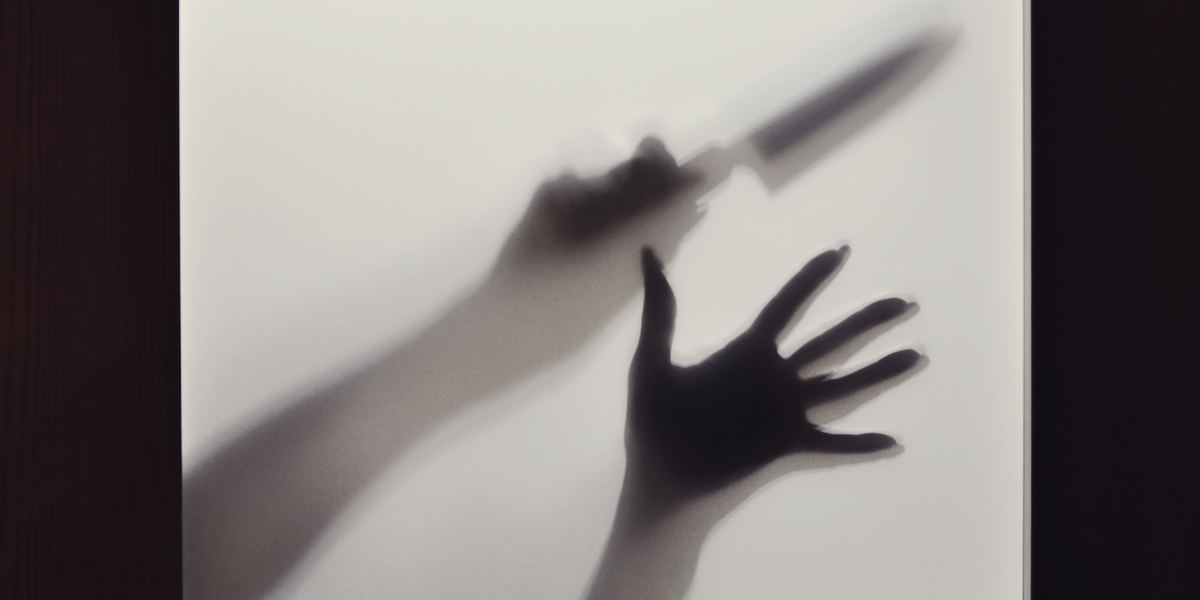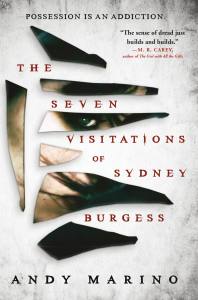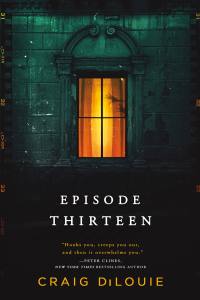The Knife’s Edge: Thrilling Horror & Horrifying Thrillers
 Genre labels are like a game of rock, paper, scissors. Take Neuromancer. William Gibson’s legendary novel defined cyberpunk by smashing together visionary worldbuilding and classic noir elements. A guy gets hired by a mysterious woman and is plunged into a shadowy world. Of course, nobody heads to the mystery section to find Neuromancer. The guy in question is a hacker, the woman’s got impossible augmentations, and the world is a dystopian future. Science fiction is the paper, mystery the rock.
Genre labels are like a game of rock, paper, scissors. Take Neuromancer. William Gibson’s legendary novel defined cyberpunk by smashing together visionary worldbuilding and classic noir elements. A guy gets hired by a mysterious woman and is plunged into a shadowy world. Of course, nobody heads to the mystery section to find Neuromancer. The guy in question is a hacker, the woman’s got impossible augmentations, and the world is a dystopian future. Science fiction is the paper, mystery the rock.
For whatever reason, we automatically accept this genre hierarchy. Plenty of fantasy novels employ political machinations and espionage to drive their plot engines, but nobody’s looking for John le Carré and George R.R. Martin in the same bookstore section. Once again, fantastical setting trumps plots architecture.
These distinctions get more complicated when you consider the blurrier line between thriller and horror. When talking about something like The Silence of the Lambs, rock, paper, and scissors meld together. Is it a dark crime thriller? Does adding the word “psychological” mean that “horror” suddenly becomes a more fitting label? Why?
It could just be a great example of “I know it when I see it.” Buffalo Bill is creepy as hell and Hannibal Lecter is a nightmare creation, simple as that. On the other hand, there are a million horrific serial killer tales that seem to fall squarely under the thriller umbrella.
Maybe it’s because in Silence, psychology is a plot point, thanks to Lecter’s profession (I’m referring to forensic psychiatry, not cannibalism). But “psychological horror” has also become a catch-all to loosely mean “scary stories that don’t have ghosts.”
We could take a hardline stance in the horror vs. thriller debate. How about this: If the story features any kind of unreal element—the supernatural, monsters, haunted houses—it’s horror, full stop. Anything involving events that could happen in real life—even if they’re unbelievably horrific—is a thriller.
It seems like a nice, easy way of breaking it down, but I’d argue that the above split doesn’t quite work—not because it’s too rigid, necessarily, but because horror by its very nature doesn’t have to be defined as a genre at all. It might be useful to think of it as a free-floating, atmospheric, uncanny tension. A dark cloud that can drift over everything from suspense to literary fiction.
While I was writing The Seven Visitations of Sydney Burgess, I worked with horror as a malleable concept that, once pinned down, led to the most visceral and upsetting elements of the story. I treated horror like a skin, stretching it over the bones of what appears to be, on the surface, a thriller that springs from a home invasion. As the procedural elements recede, the skin stitches itself together over those bones, leaving readers with a (hopefully) unique and horrifying experience.
From a marketing perspective, these genre distinctions get a bit troubling. The last thing I wanted was to write some kind of bait-and-switch novel, where fans of either straightforward thrillers or “pure” horror would each feel shortchanged in different ways.
As I set out to strike a satisfying balance, I found that both defying and living up to certain genre expectations helped the story come together. From an opening chapter that’s steeped in modern thriller vibes, real-life terrors—including the existential dread of relapse and addiction—become transformative in ways that would be impossible to pull off in a novel too firmly grounded in thriller mechanics. However you choose to draw the line between thriller and horror—whether it’s fixed in your mind or a fuzzy borderland—the tension between the two gives us a fascinating breeding ground for fresh stories.
Anyway, you can find my psychological horror crime suspense thriller novel in the horror section.
Read More Andy Marino
Sydney's spent years burying her past and building a better life for herself and her young son. A respectable marketing job, a house with reclaimed and sustainable furniture, and a boyfriend who loves her son and accepts her, flaws and all.
But when she opens her front door, and a masked intruder knocks her briefly unconscious, everything begins to unravel.
She wakes in the hospital and tells a harrowing story of escape. Of dashing out a broken window. Of running into her neighbors' yard and calling the police.
The cops tell her a different story. Because the intruder is now lying dead in her guest room—murdered in a way that looks intimately personal.
Sydney can't remember killing the man. No one believes her.
Back home, as horrific memories surface, an unnatural darkness begins whispering in her ear. Urging her back to old addictions and a past she's buried to build a better life for herself and her son.
As Sydney searches for truth among the wreckage of a past that won't stay buried for long, the unquiet darkness begins to grow. To change into something unimaginable.
To reveal terrible cravings of its own.
Fade to Black is the newest hit ghost hunting reality TV show. Led by husband and wife team Matt and Claire Kirklin, it delivers weekly hauntings investigated by a dedicated team of ghost hunting experts.
Episode Thirteen takes them to every ghost hunter's holy grail: the Paranormal Research Foundation. This brooding, derelict mansion holds secrets and clues about bizarre experiments that took place there in the 1970s. It's also famously haunted, and the team hopes their scientific techniques and high tech gear will prove it. But as the house begins to reveal itself to them, proof of an afterlife might not be everything Matt dreamed of. A story told in broken pieces, in tapes, journals, and correspondence, this is the story of Episode Thirteen—and how everything went terribly, horribly wrong.
By clicking 'Sign Up,' I acknowledge that I have read and agree to Hachette Book Group’s Privacy Policy and Terms of Use

